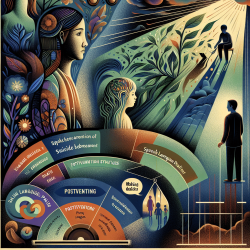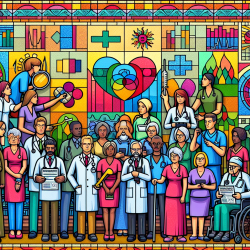Introduction to Comprehensive Sexuality Education
As a Special Education Director, my role often involves ensuring that our educational programs not only comply with legal standards but also promote the holistic development of our students. In recent years, the emphasis on Comprehensive Sexuality Education (CSE) has grown significantly, as it is recognized as a vital component in promoting healthy adolescent development. The research article titled "Commentary: Promoting healthy adolescent development through comprehensive sexuality education" provides insightful perspectives on how CSE can be a powerful tool for educators and practitioners alike.
Understanding the Core Components of CSE
The research emphasizes that CSE should encompass more than just human biology and HIV education. It should address a wide array of topics, including:
- Puberty and sexuality
- Access to sexual and reproductive health (SRH) services
- Skills development for healthy relationships
- Promotion of gender equality and respect for human rights
- Encouragement of critical thinking
These components are essential for empowering adolescents to make informed decisions and engage in healthy behaviors.
Implementing CSE: Practical Insights for Practitioners
For practitioners looking to enhance their skills and contribute to adolescent development, the research highlights several promising programs across the globe. Here are some key takeaways:
- Brazil's School-based Programs: These programs link sexuality education with health centers and cultural activities, resulting in improved SRH awareness and attitudes towards gender roles.
- Nigeria's Family Life and HIV Education Curriculum: This curriculum focuses on personal and intimate relationship skills, promoting gender-equitable attitudes and increasing confidence in resisting peer pressure.
- Girl Power Initiative in Nigeria: Aimed at building confidence and self-esteem in girls, this initiative has shown success in helping participants avoid risky situations and harmful practices.
- Program H in Latin America and the Caribbean: By engaging boys in peer group work, this program promotes gender-equitable norms and reduces risk behaviors.
These examples illustrate the potential of CSE programs to foster positive changes in attitudes and behaviors among adolescents.
Encouraging Further Research and Development
While the research provides valuable insights, it also highlights the need for more comprehensive evaluations of CSE programs. Practitioners are encouraged to engage in further research to explore the long-term impacts of these interventions. By doing so, they can contribute to the development of evidence-based practices that enhance the effectiveness of CSE.
Conclusion
Comprehensive Sexuality Education is a critical component of adolescent development, offering numerous benefits for young people. As practitioners, it is our responsibility to implement these programs effectively and continue researching their impacts. By doing so, we can ensure that our students are equipped with the knowledge and skills they need to navigate the complexities of adolescence successfully.
To read the original research paper, please follow this link: Commentary: Promoting healthy adolescent development through comprehensive sexuality education.










